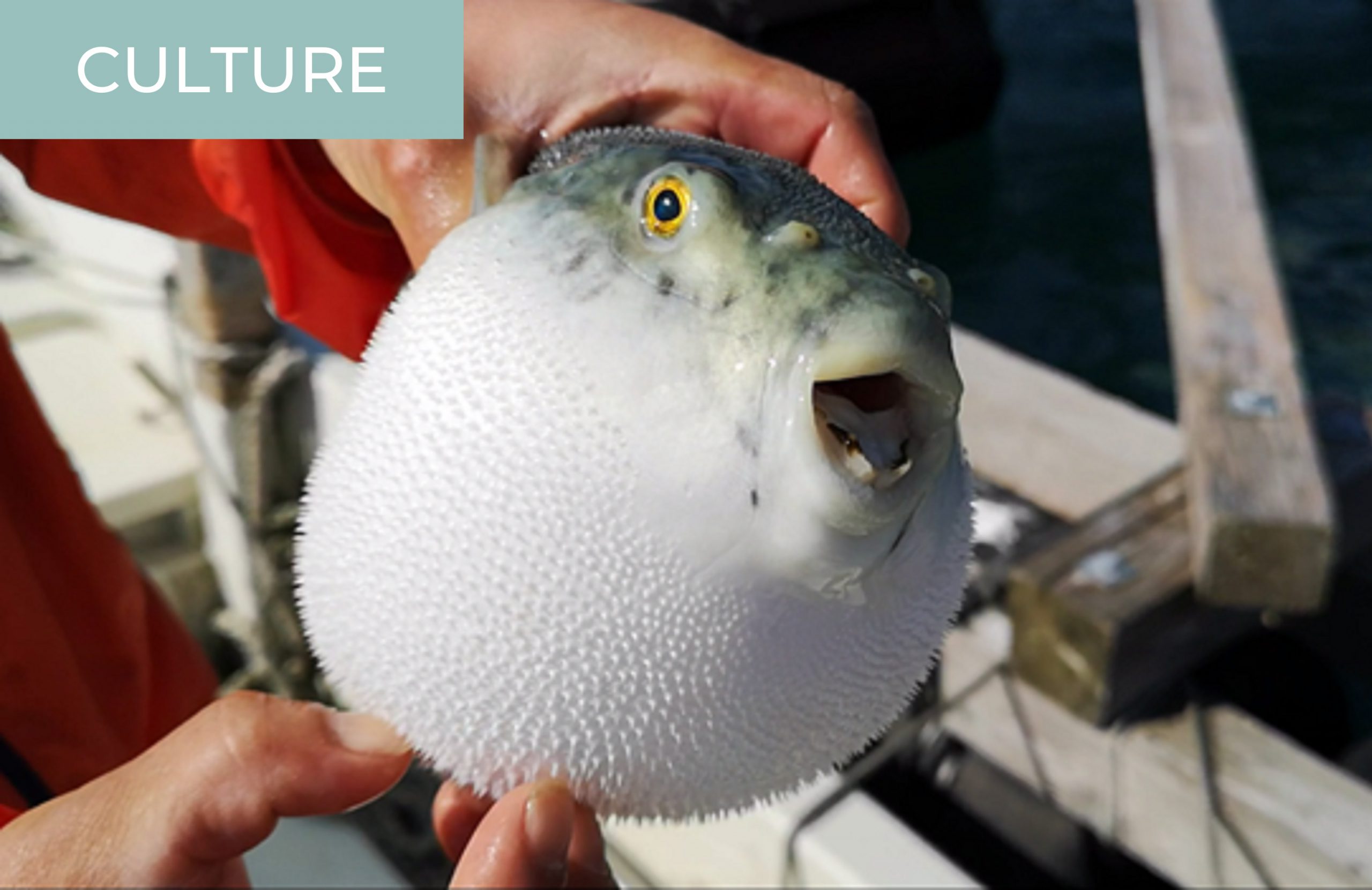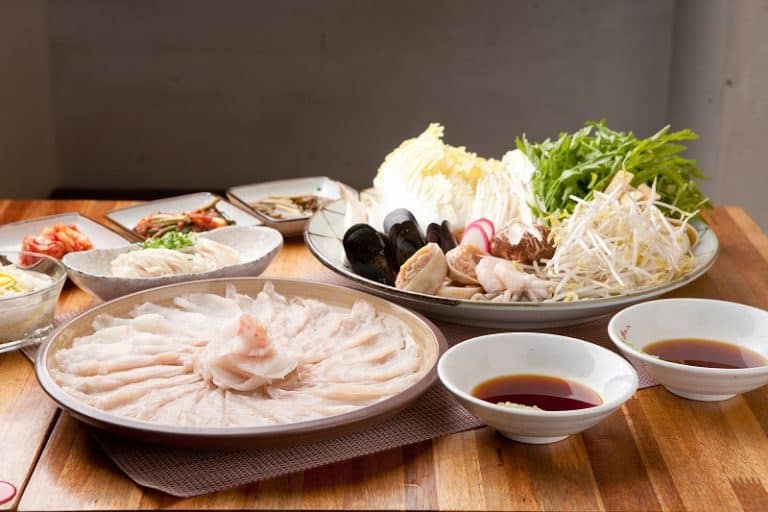

I’m not sure if we were offered this special room as a nice gesture for the foreigners or to keep the inexperienced fugu eaters away from the other diners. Courtesy of the ever so thoughtful Japanese, they had built in some space beneath the table to save our inflexible Western legs. The restaurant had an open-plan space with Western-style tables and chairs but we were shown to a private room that was a shoes-off affair and had a sunken table and tatami mat flooring. Nevertheless, as soon as I opened the door, we were welcomed inside. The restaurant was signposted only in Japanese so were it not for my iPhone map and my dad, my dining companion, spotting the live blowfish in a tank in the window, I would have walked passed the place. (Disclaimer: I’m making no promises that if you eat in the same place, you will also live – that’s up the the chef!) First impressions It may look nice, but even one lick will kill you, so please just eat around it.” and, worst-case scenario, not have to flick through my Japanese phrase book to find the translation for, “Please be a jolly good fellow and call me an ambulance, I suspect I may be dying from fugu poisoning”.ĭue to its proximity to my accommodation, I chose one of the restaurant in Ueno…and I lived to tell this tale. In a situation where I was going to eat something potentially lethal, I wanted to be able to hear the instructions in my mother tongue so there was was no chance I’d misinterpret any comments like, “This is the liver. I chose this restaurant for a couple of reasons – the prices seemed closer to affordable than others I’d seen quoted and, perhaps more importantly, there was an English language option on the website and tourists were welcome. Torafugu is the most prized form of blowfish, as it is thought to be the most edible, but it is also the most poisionous…so that was reassuring…kind of…maybe?

It’s also noteworthy that Torafugu is the name of the type of fugu served at the restaurant. Not quite a McDonalds of the fugu world (the prices alone set the two apart), but certainly a brand that has made a name for itself in this highly specialised cuisine. I was even more surprised to find that there is a fugu restaurant chain – Torafugu.

To my surprise, there are, in fact, many fugu restaurants in Japan. Where I tried fuguĪs mentioned, only specially skilled chefs are legally allowed to work in a fugu restaurant, which led me to the incorrect assumption that getting hold of fugu would be much like searching for the elusive unicorn (something I have still yet to track down but when I do, I’m thinking I’ll try it barbecued). But people do still die…and that fact was at the very front of my mind when I decided I wanted to spend my birthday dining on fugu. Fortunately, death rates have been reduced in recent years with up to 6 deaths per year recorded between 1996 to 2006. The poison in the fish, tetrodotoxin (I can’t pronounce it either), paralyses its victim’s muscles leaving them conscious until they slowly die from asphyxiation. The importance of this trainining is highlighted by the fact that deaths commonly occur when unskilled people try to prepare the fish at home (I’m assuming the DIY fugu chefs watch videos on You Tube before accidentally committing suicide by fugu…that’s probably how I’d do it). There are strict laws in place in Japan to regulate the production and serving of fugu, which is only permitted by highly trained chefs. (If you’re confused by the difference between pufferfish and blowfish, don’t be – they are two different words for the same thing.) These deadly bits are largely the organs such as the liver, which is never served, but if the fish is prepared incorrectly, eating fugu can kill you. Not so remarkable, you might think, until you discover that it contains highly poisonous parts. What is fugu?įor those who don’t know, fugu is the Japanese word for pufferfish. One of my personal highlights when travelling is trying new food and I’ve eaten many curious items over the years – so it seemed only natural for me to want to try fugu in Japan.


 0 kommentar(er)
0 kommentar(er)
